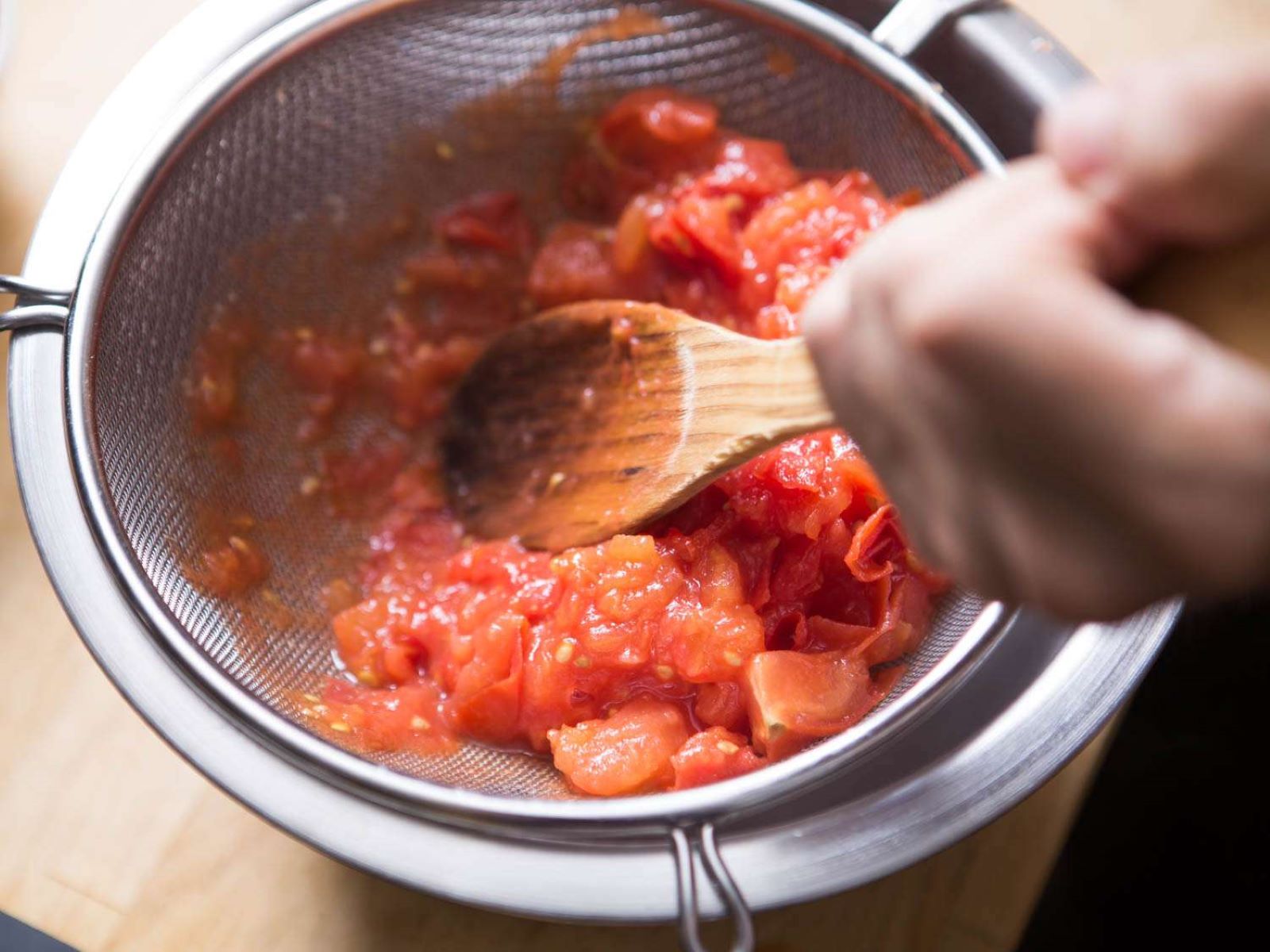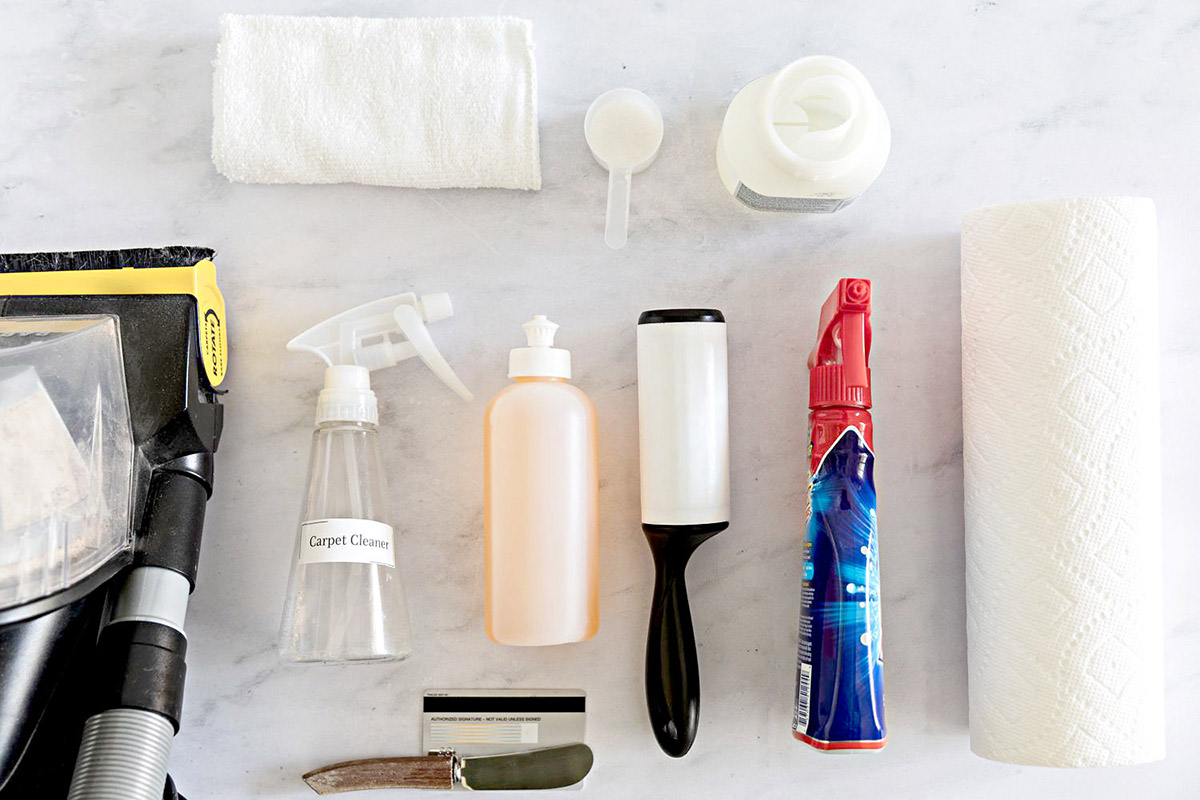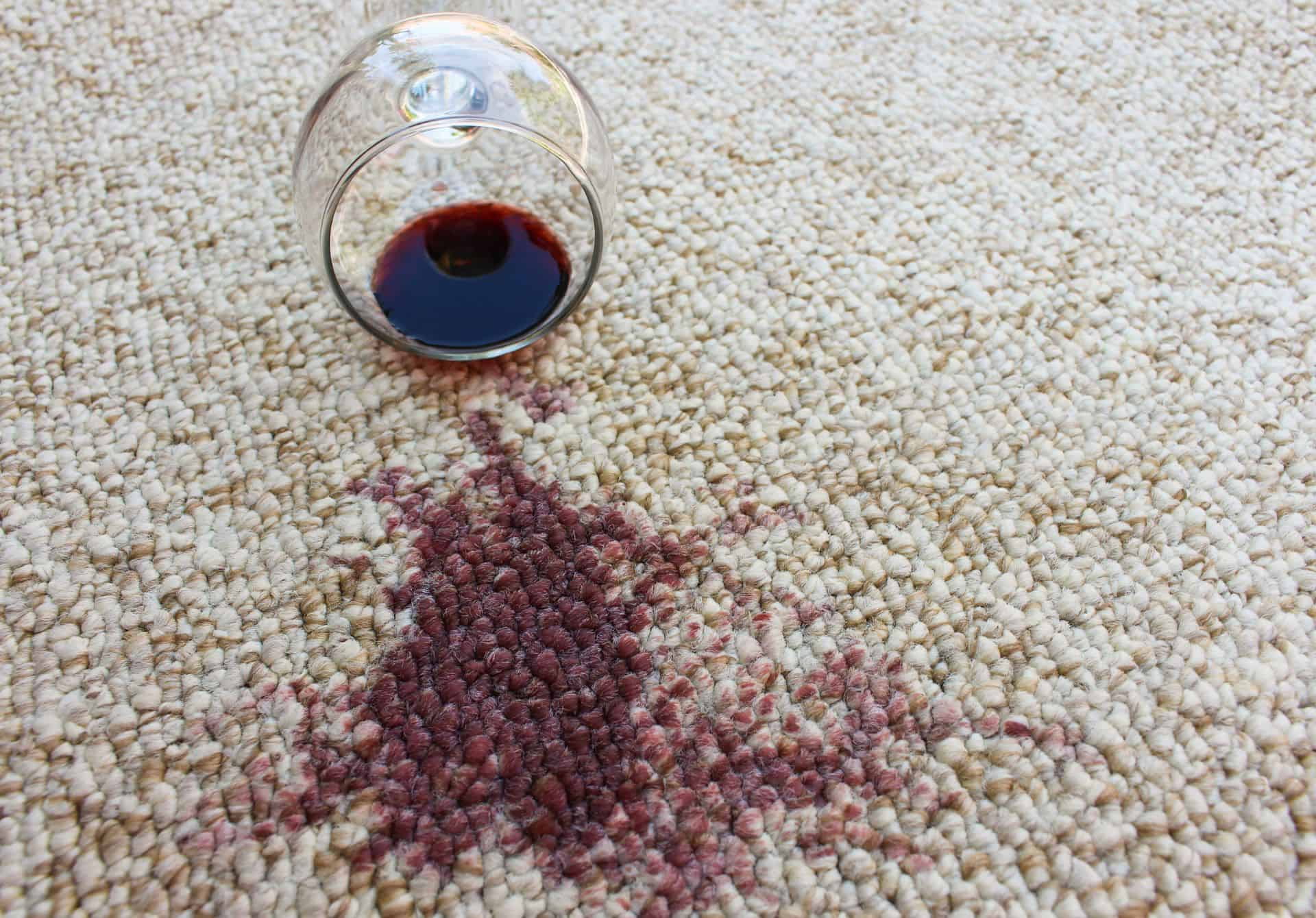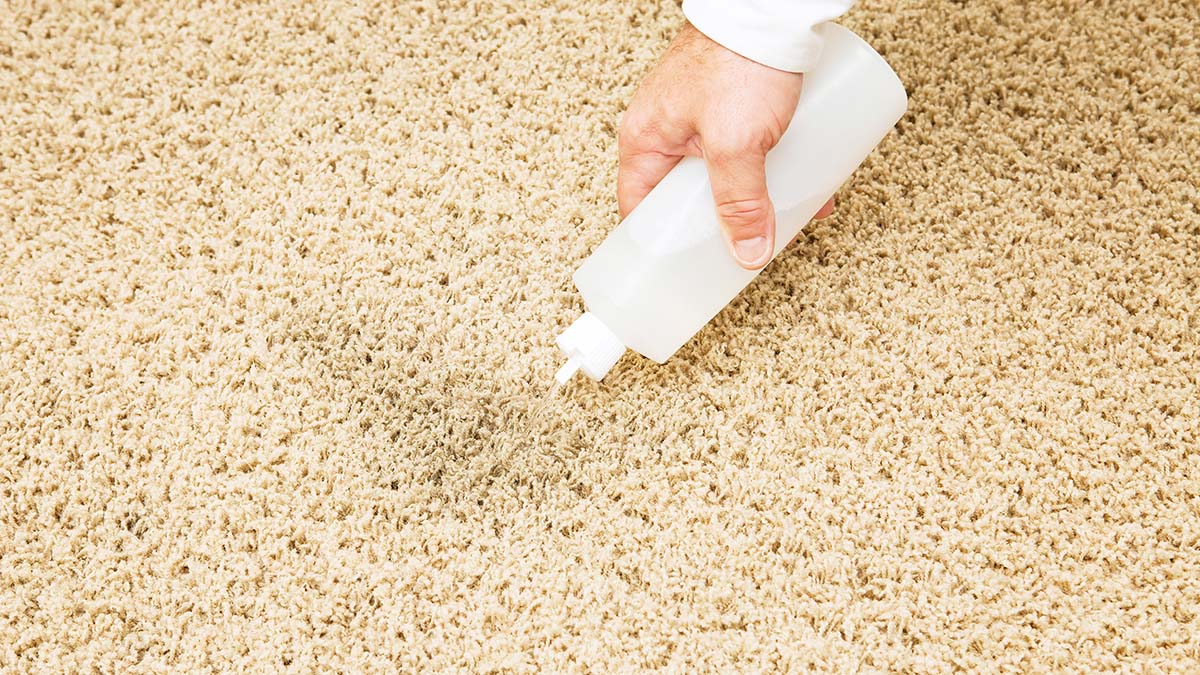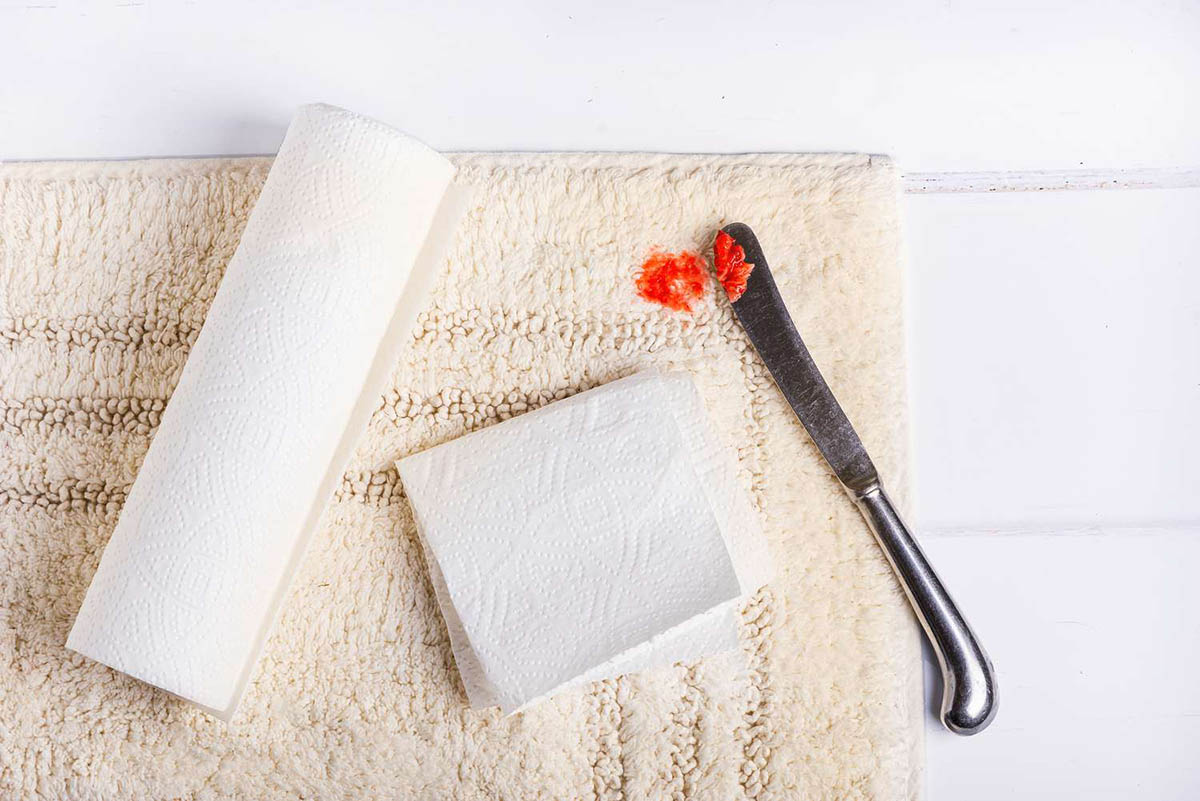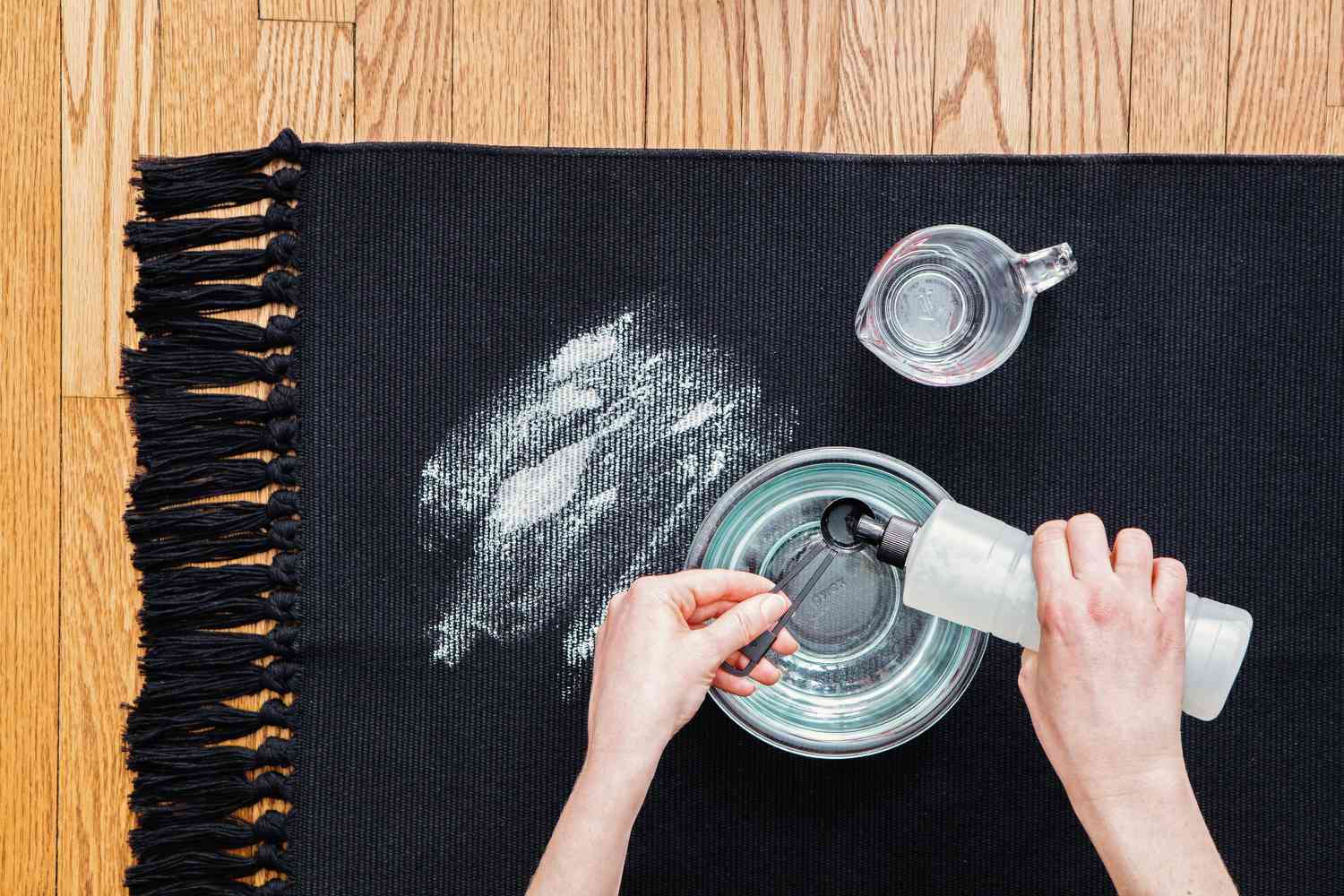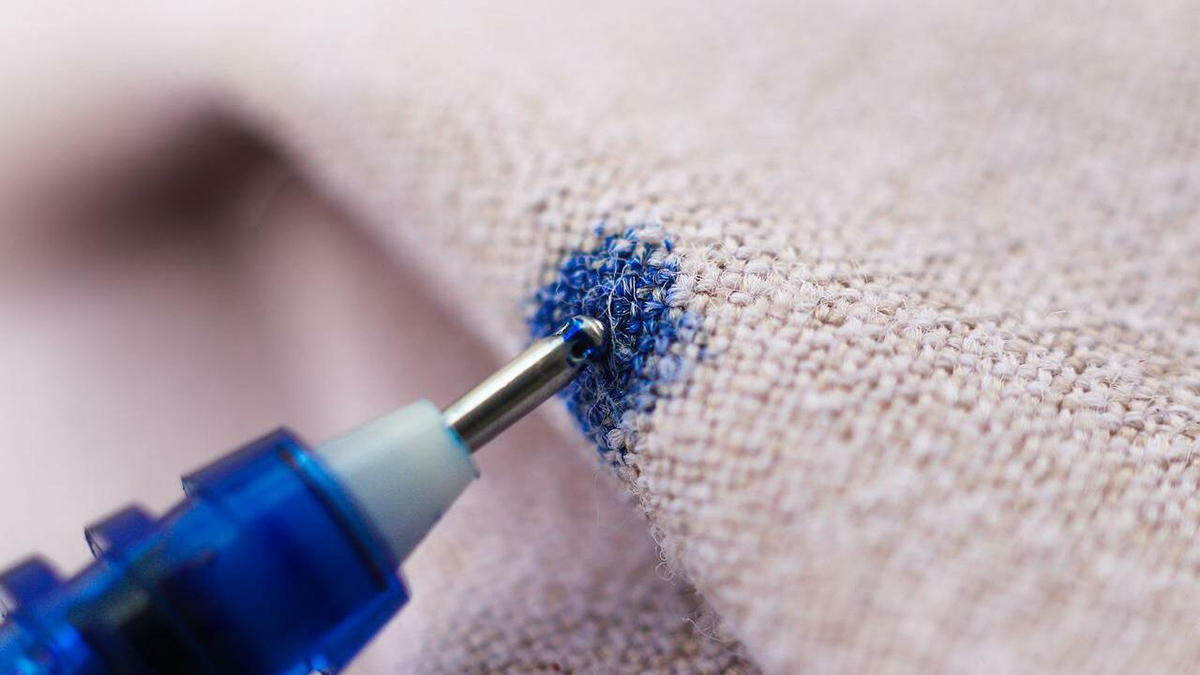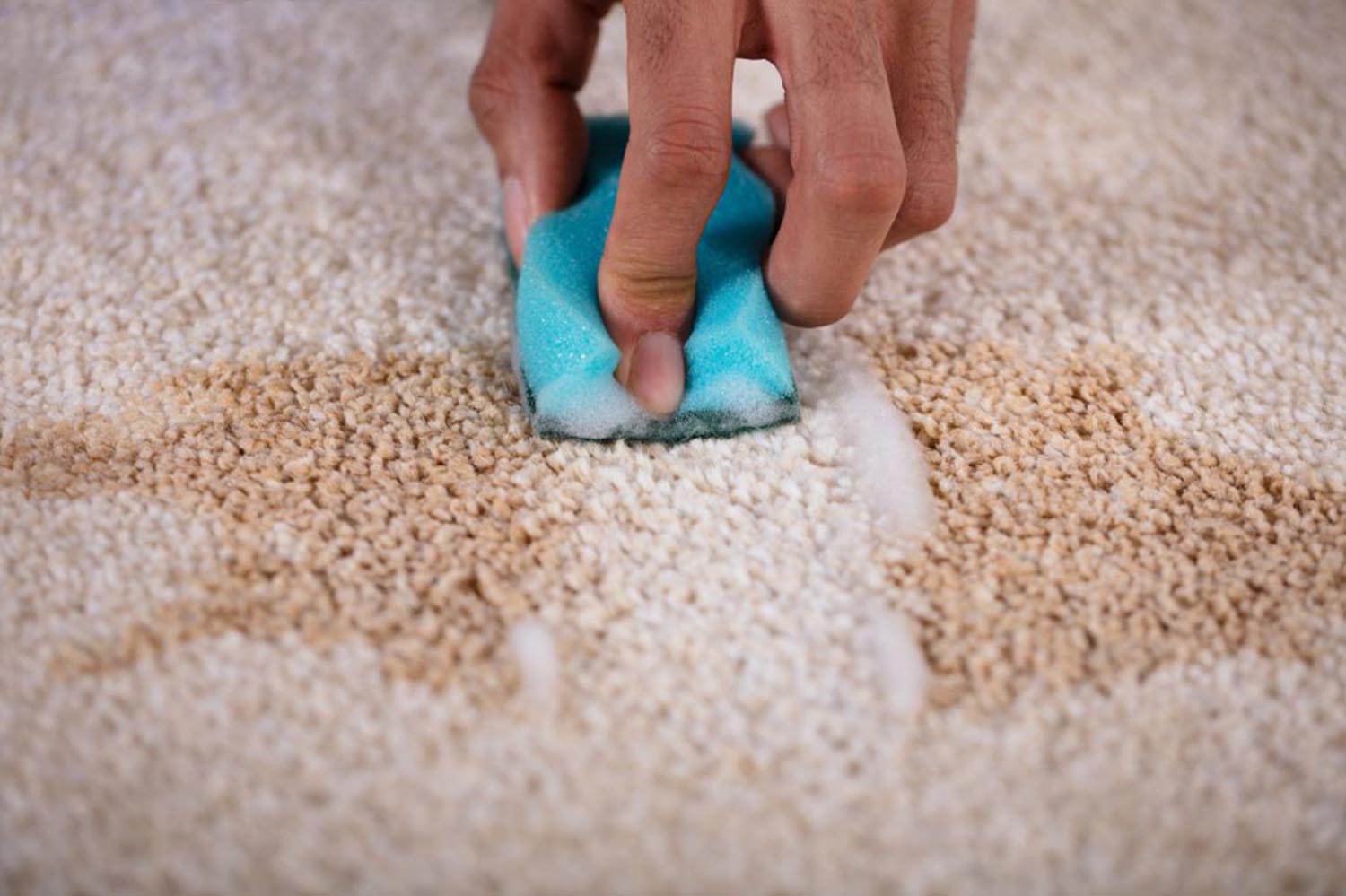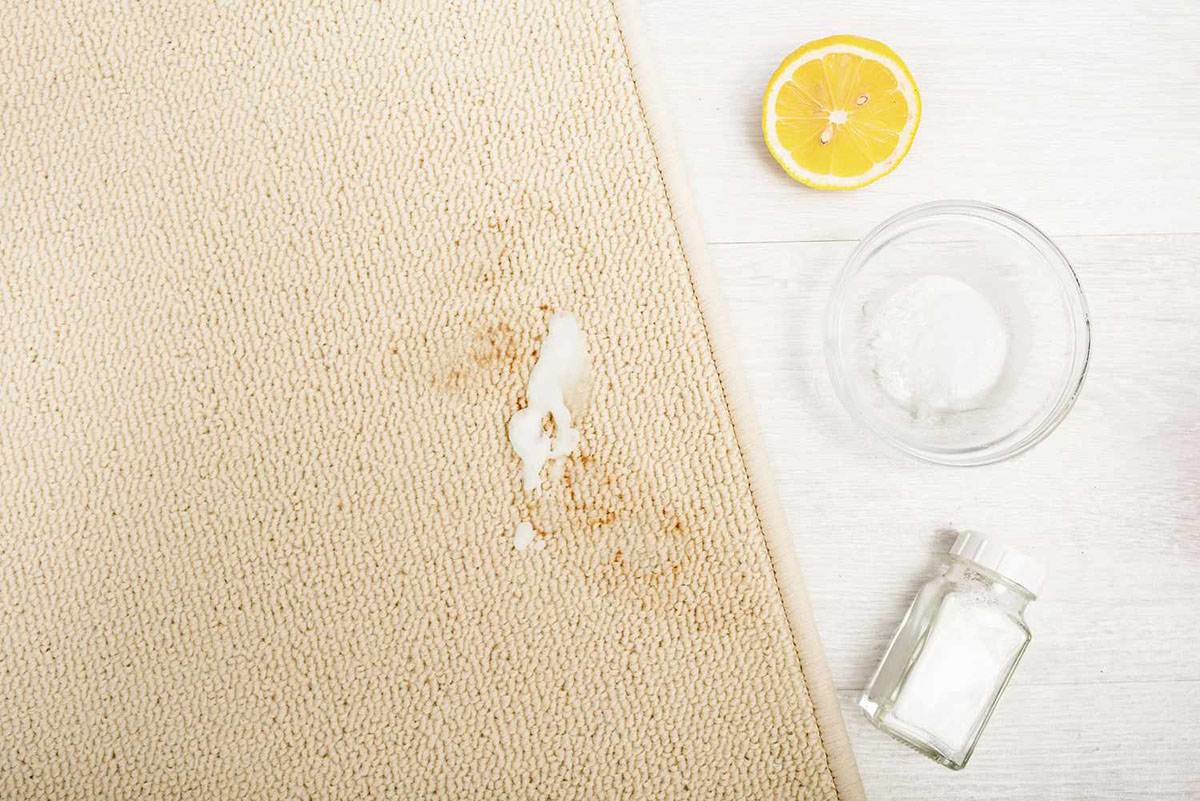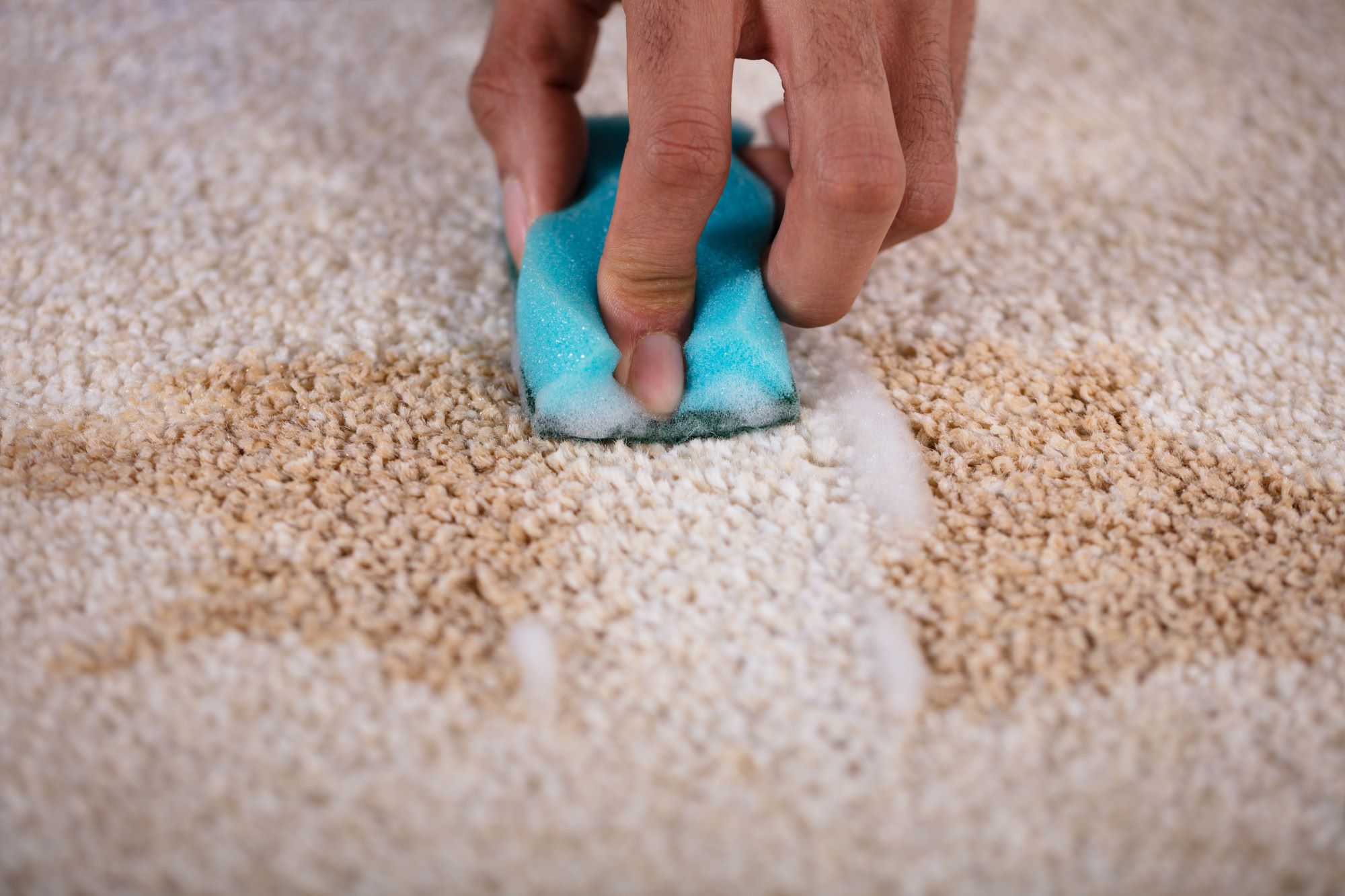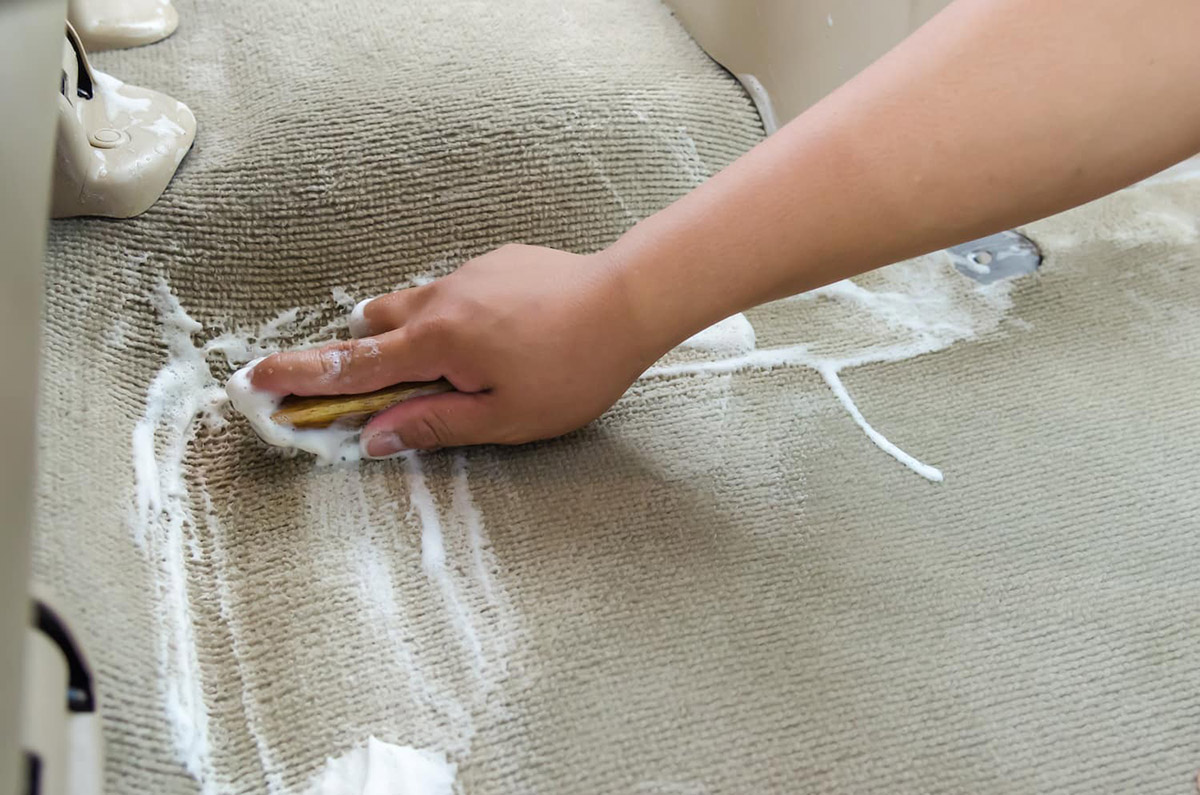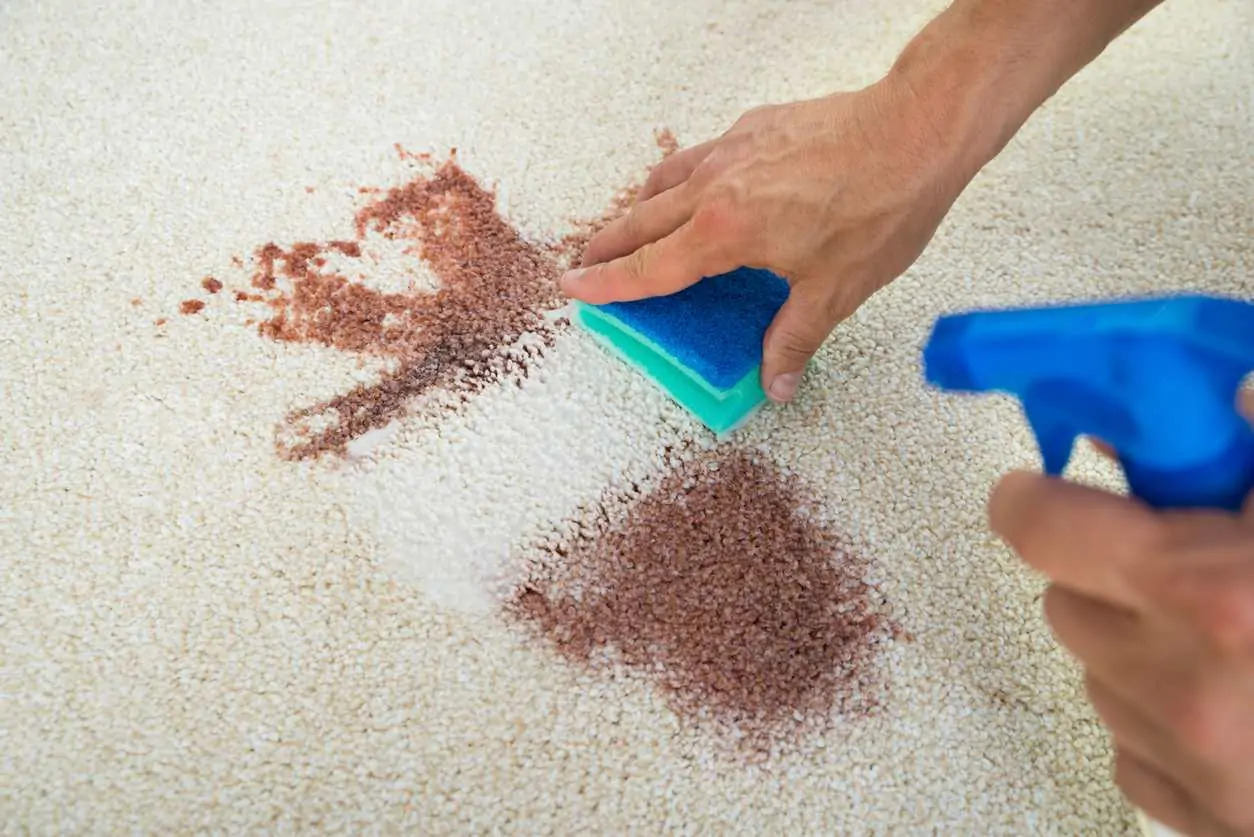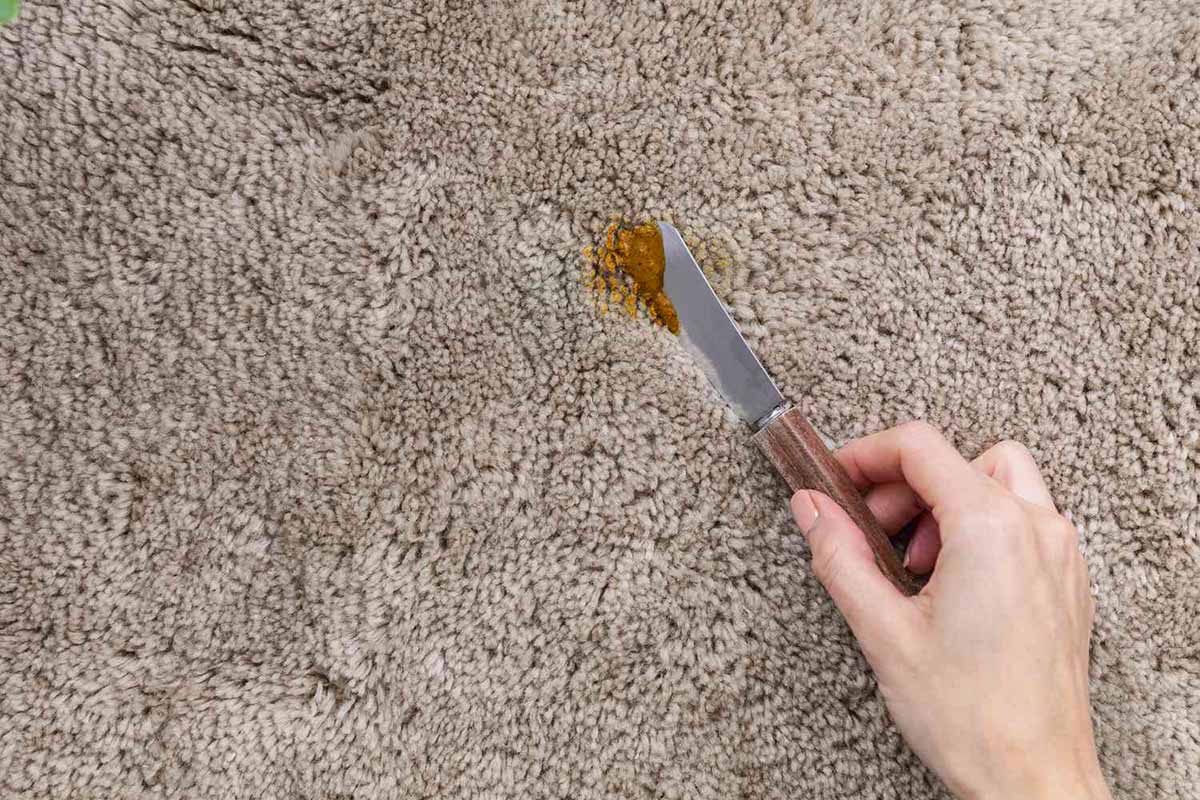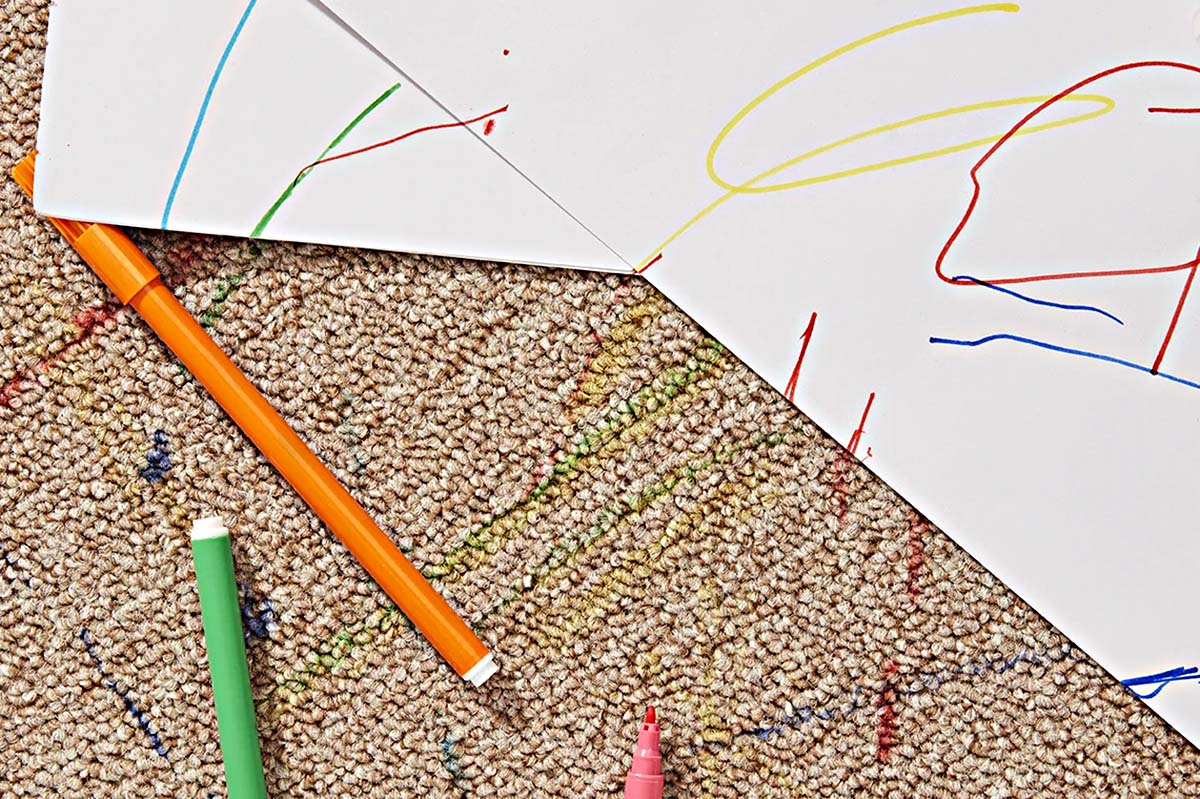Home>Articles>How To Remove Tomato Sauce Stains From A Carpet
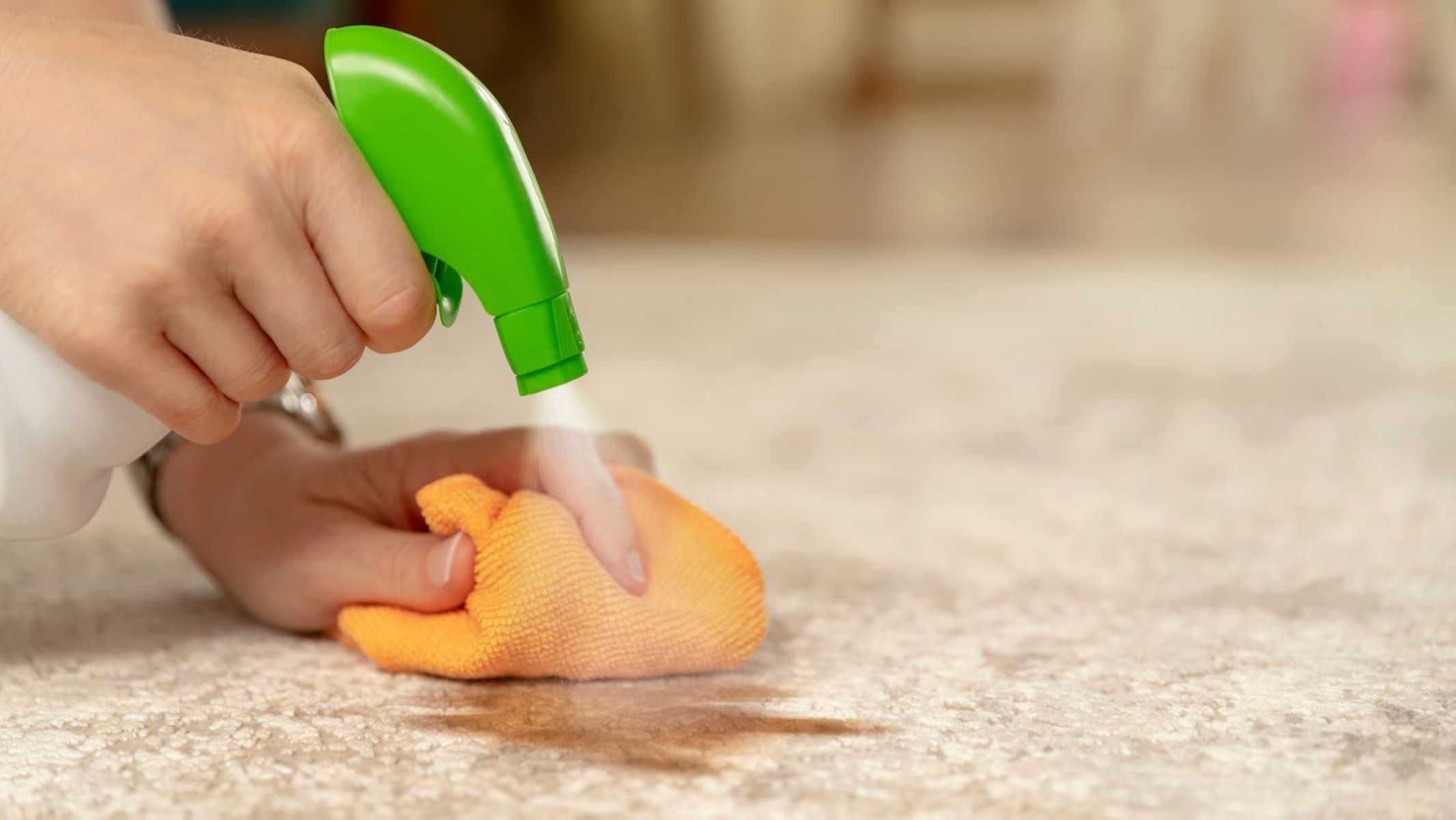

Articles
How To Remove Tomato Sauce Stains From A Carpet
Modified: January 23, 2024
Learn effective methods to remove stubborn tomato sauce stains from your carpet with these helpful articles. Say goodbye to stains for good!
(Many of the links in this article redirect to a specific reviewed product. Your purchase of these products through affiliate links helps to generate commission for Storables.com, at no extra cost. Learn more)
Introduction
Dealing with a tomato sauce stain on your carpet is never a pleasant task. Whether it’s from an accidental spill during dinner or a mishap while cooking, tomato sauce stains can be stubborn and leave behind unsightly marks on your carpet. However, with the right approach and some simple household ingredients, you can effectively remove these stains and restore your carpet to its original pristine condition.
In this step-by-step guide, we will walk you through the process of removing tomato sauce stains from your carpet. With a little patience and diligence, you can say goodbye to those pesky stains and enjoy a clean and fresh-smelling carpet once again.
Key Takeaways:
- Act quickly to blot up tomato sauce stains with a white cloth, then apply a gentle cleaning solution and rinse thoroughly to restore your carpet to its pristine condition.
- For stubborn stains, try an alternative method using a vinegar solution to effectively combat tough tomato sauce stains on your carpet. Always perform a patch test before applying any cleaning solutions.
Step 1: Blot the Stain
The first step in tackling a tomato sauce stain on your carpet is to act quickly. As soon as the spill occurs, grab a clean white cloth or paper towel and gently blot the stain. Avoid rubbing or scrubbing, as this can push the stain deeper into the carpet fibers and make it even more difficult to remove.
Start by absorbing as much of the tomato sauce as possible. Place the cloth or paper towel over the stain and gently press down, allowing it to soak up the excess sauce. Continue blotting until no more sauce transfers onto the cloth.
It’s important to use a white cloth or paper towel to avoid transferring any dyes or colors onto your carpet. Colored fabrics may bleed onto the carpet, causing further stains and making the situation worse.
If the stain is fresh and still wet, you can also use a spoon or a dull knife to carefully scrape off any excess sauce, taking care not to damage the carpet fibers. Remember to work from the outer edges of the stain towards the center to prevent spreading the stain further.
Once you have successfully blotted up as much of the tomato sauce as possible, it’s time to move on to the next step in the cleaning process.
Step 2: Apply a Cleaning Solution
Now that you have blotted the tomato sauce stain, it’s time to tackle it with a cleaning solution. There are several effective cleaning solutions you can use, depending on the materials you have readily available.
A popular homemade solution is a mixture of dish soap and warm water. In a small bowl, mix a few drops of dish soap with warm water until it forms a soapy solution. Alternatively, you can use a carpet cleaning solution specifically designed for removing stains.
To apply the cleaning solution, dampen a clean white cloth with the mixture. Make sure the cloth is not dripping wet, as excessive moisture can damage the carpet backing. Gently dab the stained area with the cloth, working from the outer edges towards the center.
Allow the cleaning solution to sit on the stain for a few minutes, giving it time to break down the tomato sauce particles. This will make it easier to remove the stain during the next step.
If the stain is particularly stubborn, you may need to repeat the application of the cleaning solution and let it sit for a bit longer. Remember to always blot gently and avoid rubbing, as this may cause the stain to spread or damage the carpet fibers.
Once you have treated the stain with the cleaning solution, it’s time to move on to the next step of the process.
Step 3: Gently Scrub the Stain
After applying the cleaning solution to the tomato sauce stain, it’s time to gently scrub the area to further loosen and lift the stain from the carpet fibers.
Using a soft-bristle brush or a clean white cloth, gently scrub the stained area in a circular motion. Be careful not to scrub too vigorously, as this may damage the carpet fibers or spread the stain further.
Continue scrubbing the stain until you notice the tomato sauce starting to break up and lift from the carpet. You may need to apply additional cleaning solution as you go along to help with the process.
If you are using a brush, make sure it has soft bristles to prevent any potential damage to the carpet. Alternatively, you can also use a clean white cloth to gently rub the stain in a circular motion.
Remember to work from the outer edges of the stain towards the center, gradually moving inward. This will prevent the stain from spreading and help contain the cleaning efforts to the affected area.
Continue gently scrubbing the stain until you are satisfied with the results. If the stain persists, don’t worry, as there are still additional steps you can take to remove it completely.
Now it’s time to move on to the next step in the cleaning process: rinsing the area to remove any remaining cleaning solution and residue.
Blot the stain with a clean cloth to remove excess sauce. Mix 1 tablespoon of dish soap with 2 cups of warm water and blot the stain with the solution. Rinse with water and blot dry. If the stain persists, try using a carpet stain remover according to the product’s instructions.
Step 4: Rinse the Area
After scrubbing the tomato sauce stain, it’s important to rinse the area to remove any remaining cleaning solution and residue. Rinsing will help ensure that no soapy residue is left behind, which could attract dirt and cause the stain to reappear over time.
You can rinse the area with plain water by dampening a clean cloth or sponge and gently blotting the stain. Alternatively, you can use a spray bottle filled with clean water and lightly mist the stained area. Avoid saturating the carpet, as excessive moisture can lead to mold growth or damage to the flooring beneath.
Gently blot or dab the area until you no longer see any traces of the cleaning solution or soapy residue. It may take a few rounds of rinsing to thoroughly remove all the residue.
If you prefer, you can also use a wet-dry vacuum to extract the water and cleaning solution from the carpet. This method can accelerate the drying process and ensure that no excess moisture remains in the fibers.
Once you have thoroughly rinsed the area, move on to the final step: drying the carpet to prevent any mold or mildew growth.
Read more: How To Remove Seeds From Tomato Sauce
Step 5: Dry the Carpet
The final step in removing tomato sauce stains from your carpet is to ensure that it dries thoroughly. Proper drying is crucial to prevent any moisture-related issues, such as mold or mildew growth.
Start by using a clean, dry cloth or paper towels to blot the area and absorb as much moisture as possible. Press down firmly and repeat the blotting process until the carpet feels mostly dry to the touch.
Next, create airflow in the room by opening windows, turning on fans, or using a dehumidifier. Increased airflow will help speed up the drying process and prevent moisture from lingering in the carpet fibers.
Avoid walking on the damp carpet until it is completely dry, as this can push moisture further into the fibers and potentially cause re-soiling.
If you need to expedite the drying process, you can also use a hairdryer set to a low heat or cool setting. Keep the dryer at least six inches away from the carpet and continuously move it to prevent overheating or damage to the fibers.
Once the carpet is thoroughly dry, take a moment to assess the results. If there are any remnants of the tomato sauce stain, you may need to repeat the cleaning process or consider using an alternative method.
Alternatively, if the stain has been successfully removed, give yourself a pat on the back for a job well done!
Now that you have learned the step-by-step process for removing tomato sauce stains from your carpet, you can confidently tackle any future spills or stains that come your way. Remember to always act quickly, use the right cleaning solutions, and handle the stain with care to ensure the best possible results.
Now go ahead and enjoy a clean and stain-free carpet!
Alternative Method: Using Vinegar
If the previous steps didn’t fully remove the tomato sauce stain from your carpet, don’t worry! There is an alternative method using vinegar that you can try.
Vinegar is a natural cleaning agent that can effectively break down stains and eliminate odors. Here’s how you can use it to tackle the tomato sauce stain:
- Mix a solution of equal parts white vinegar and water in a spray bottle. For example, combine 1 cup of vinegar with 1 cup of water.
- Spray the vinegar solution onto the tomato sauce stain, ensuring the area is thoroughly dampened but not saturated. Allow the solution to sit for about 10-15 minutes to penetrate the stain.
- Gently blot the area with a clean cloth or paper towel to absorb the vinegar solution along with the loosened tomato sauce particles. Repeat this process until you see the stain starting to fade.
- Rinse the area with water to remove any residue. Blot the carpet with a clean, dry cloth or use a wet-dry vacuum to extract the excess moisture.
- Allow the carpet to air dry completely before assessing the results. If any remnants of the stain remain, repeat the process or consider seeking professional assistance.
It’s important to note that vinegar has a strong odor that may linger temporarily. However, once the carpet is completely dry, the smell should dissipate.
Always perform a patch test on a small, inconspicuous area of your carpet before using vinegar or any other cleaning solution to ensure it doesn’t cause any damage or discoloration.
By utilizing this alternative method with vinegar, you have another effective approach to combatting tomato sauce stains on your carpet.
Remember, different staining incidents may require varying methods and solutions, so be adaptable and adjust your approach accordingly. With patience and persistence, you can successfully remove even the toughest stains and restore the beauty of your carpet.
Conclusion
Removing tomato sauce stains from your carpet may seem like a daunting task, but with the right techniques and a little bit of effort, you can achieve remarkable results. By following the step-by-step guide outlined in this article, you can effectively tackle these stubborn stains and restore your carpet to its original pristine condition.
Remember to act quickly when a spill occurs, blotting the stain to remove as much tomato sauce as possible. Then, apply a cleaning solution such as a mixture of dish soap and warm water or a carpet cleaning solution to break down the stain. Gently scrub the stain, rinse the area, and dry the carpet thoroughly to prevent any moisture-related issues.
If the initial method doesn’t completely remove the stain, you can try an alternative method using vinegar. Vinegar is a natural and effective cleaning agent that can help eliminate tough stains and odors.
It’s important to be mindful of the material of your carpet and to perform a patch test before applying any cleaning solutions to avoid any damage or discoloration.
By following these steps and being persistent, you can successfully remove tomato sauce stains from your carpet and enjoy a clean and fresh-smelling home.
However, if the stain persists or if you feel unsure about tackling it yourself, it’s always a good idea to seek professional help. Professional carpet cleaners have the experience and expertise to handle even the most stubborn stains and can ensure that your carpet is restored to its former glory.
Remember, prevention is key! Do your best to avoid spills and accidents by being cautious while enjoying tomato-based meals and having protective measures in place, such as using placemats or carpet protectors.
With proper care and maintenance, your carpet can remain stain-free and provide comfort and beauty to your home for years to come.
Frequently Asked Questions about How To Remove Tomato Sauce Stains From A Carpet
Was this page helpful?
At Storables.com, we guarantee accurate and reliable information. Our content, validated by Expert Board Contributors, is crafted following stringent Editorial Policies. We're committed to providing you with well-researched, expert-backed insights for all your informational needs.
